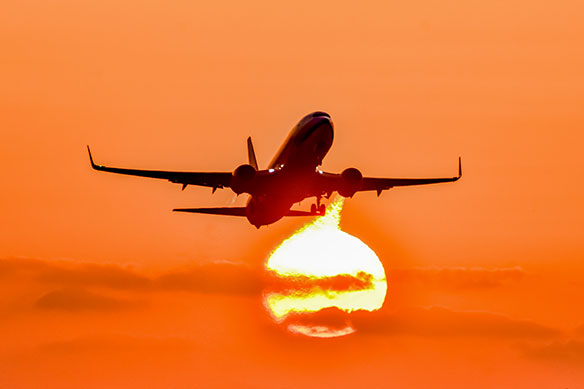IATA Reports A Disappointing October

IATA reports that the recovery of passenger demand continued to be disappointingly slow in October. The industry association indicated:
- Total demand (measured in revenue passenger kilometers or RPKs) was down 70.6% compared to October 2019. This was just a modest improvement from the 72.2% year-to-year decline recorded in September. Capacity was down 59.9% compared to a year ago and load factor fell 21.8 percentage points to 60.2%.
- International passenger demand in October was down 87.8% compared to October 2019, virtually unchanged from the 88.0% year-to-year decline recorded in September. Capacity was 76.9% below previous year levels, and load factor shrank 38.3 percentage points to 42.9%.
- Domestic demand drove what little recovery there was, with October domestic traffic down 40.8% compared to the prior year. This was improved from a 43.0% year-to-year decline in September. Capacity was 29.7% below 2019 levels and the load factor dropped 13.2 percentage points to 70.4%.
Alexandre de Juniac, IATA’s director general and CEO, said that: “Fresh outbreaks of COVID-19 and governments’ continued reliance on heavy-handed quarantines resulted in another catastrophic month for air travel demand. While the pace of recovery is faster in some regions than others, the overall picture for international travel is grim. This uneven recovery is more pronounced in domestic markets, with China’s domestic market having nearly recovered, while most others remain deeply depressed.”
IATA’s boss stated: “This crisis is unrelenting. Our latest economic outlook is for airlines to lose $118.5 billion this year, or $66 for every passenger carried. Assuming borders re-open by mid-2021, the industry will ‘only’ lose $38.7 billion in 2021. Now is the time for governments to step up. The $173-billion of support provided to date has enabled the industry to survive, but more is required to carry the industry through to next summer.”
And de Juniac continued: “IATA has identified a range of market stimulation options that will support the viability of air routes while encouraging people to travel. Without aviation’s $3.5 trillion contribution to global GDP, there can be no broader economic recovery.”
IATA’s Market Stimulation Plan
In calling on governments to add market stimulation measures to the support they are giving to keep aviation financially viable currently, IATA says that such measures would encourage travel while systematic testing protocols enable a safe re-opening of borders.
IATA’s de Juniac said that: “Financially viable airlines will be needed to lead the economic recovery from the depths of the COVID-19 crisis. Government support of $173 billion has helped many survive.”
And he continued: “With potential to safely re-open borders and revive travel with testing, governments will need to add measures that stimulate demand. Such targeted initiatives will help generate revenues, avoid adding debt to airlines, and immediately generate economic activity across the value chain.”
IATA identified five proven ways that governments can help stimulate the air travel market while avoiding adding more debt to already highly leveraged airline balance sheets.
These include:
- Temporary waivers or suspensions of government charges, taxes and fees to airlines and passengers will reduce flight costs and lower travel costs for passengers.
- Route subsidies for flights to local/regional destinations to support connectivity for rural communities and business.
- Financial incentives in the form of rewards for operating flights, or seats flown, which can support airlines while load factors or yields are too low.
- Advance ticket purchases that governments can use for future trips or distribute to the traveling public in the form of vouchers to support travel and tourism.
- Passenger travel subsidies in the form of vouchers for passengers or as a percentage cash-back on overall travel costs.
In normal times, aviation supports more than 87 million jobs and $3.5 trillion in GDP contribution worldwide. But 46 million jobs and $1.8 trillion in economic activity supported by aviation have been put at serious risk by the dramatic fall in travel demand.
The potential to re-start travel with testing should be a turning point. And it creates the opportunity for government measures to stimulate demand, taking economic advantage from aviation’s role as an economic catalyst.
Said de Juniac: “A robust economic recovery needs people to start traveling again. Every job in aviation supports a further 29 jobs, demonstrating the broad impact that re-connecting the world will have. There are many good ideas out there. Any government stands to benefit by including proven stimulus measures into their economic recovery plans. When people travel, economies prosper and grow.”
IATA’s COVID-19 Government Action for Market Stimulation presentation can be viewed by CLICKING HERE.


